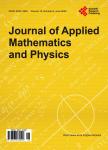Rotating Lepton Model of Pions and Kaons: Mechanics at fm Distances
Rotating Lepton Model of Pions and Kaons: Mechanics at fm Distances作者机构:University of Patras Patras Greece Academy of Athens Athens Greece Stanford University Stanford USA Aristotle University of Thessaloniki Thessaloniki Greece Michigan Technological Institute Houghton USA Friedrich-Alexander University Erlangen-Nürnberg Germany
出 版 物:《Journal of Applied Mathematics and Physics》 (应用数学与应用物理(英文))
年 卷 期:2022年第10卷第9期
页 面:2805-2819页
学科分类:07[理学] 070202[理学-粒子物理与原子核物理] 0702[理学-物理学]
主 题:Pions and Kaons-Structure and Masses Gravitational Bohr-de Broglie-Newton-Einstein Type Models Rotating Lepton Model (RLM) Hadronization Neutrino Masses Special Relativity Gravitational Force Quantum Mechanics
摘 要:The present article is a continuation of a recently published paper [1] in which we have modeled the composition and structure of neutrons and other hadrons using the Rotating Lepton Model (RLM) which is a Bohr type model employing the relativistic gravitational attraction between three ultrafast rotating neutrinos as the centripetal force. The RLM accounts for special relativity and also for the De Broglie equation of quantum mechanics. In this way this force was shown to reach the value of the Strong Force while the values of the masses of the rotating relativistic neutrinos reach those of quarks. Masses computed for twelve hadrons and bosons are in very close (~2%) agreement with the experimental values. Here we use the same RLM approach to describe the composition and structure and to compute the masses of Pions and Kaons which are important zero spin mesons. Contrary to hadrons and bosons which have been found via the RLM to comprise the heaviest neutrino eigenmass m3, in the case of mesons the intermediate neutrino mass eigenstate m2 is found to play the dominant role. This can explain why the lowest masses of mesons are generally smaller than those of hadrons and bosons. Thus in the case of Pions it is found that they comprise three rotating m2 mass eigenstate neutrinos and the computed mass of 136.6 MeV/c2 is in good agreement with the experimental value of 134.977 MeV/c2. The Kaon structure is found to consist of six m2 mass eigenstate neutrinos arranged in two parallel pion-type rotating triads. The computed Kaon mass differs less that 2% from the experimental K± and K°values of 493.677 MeV/c2 and 497.648 MeV/c2 respectively. This, in conjunction with the experimentally observed decay products of the Kaons, provides strong support for the proposed K structure.



